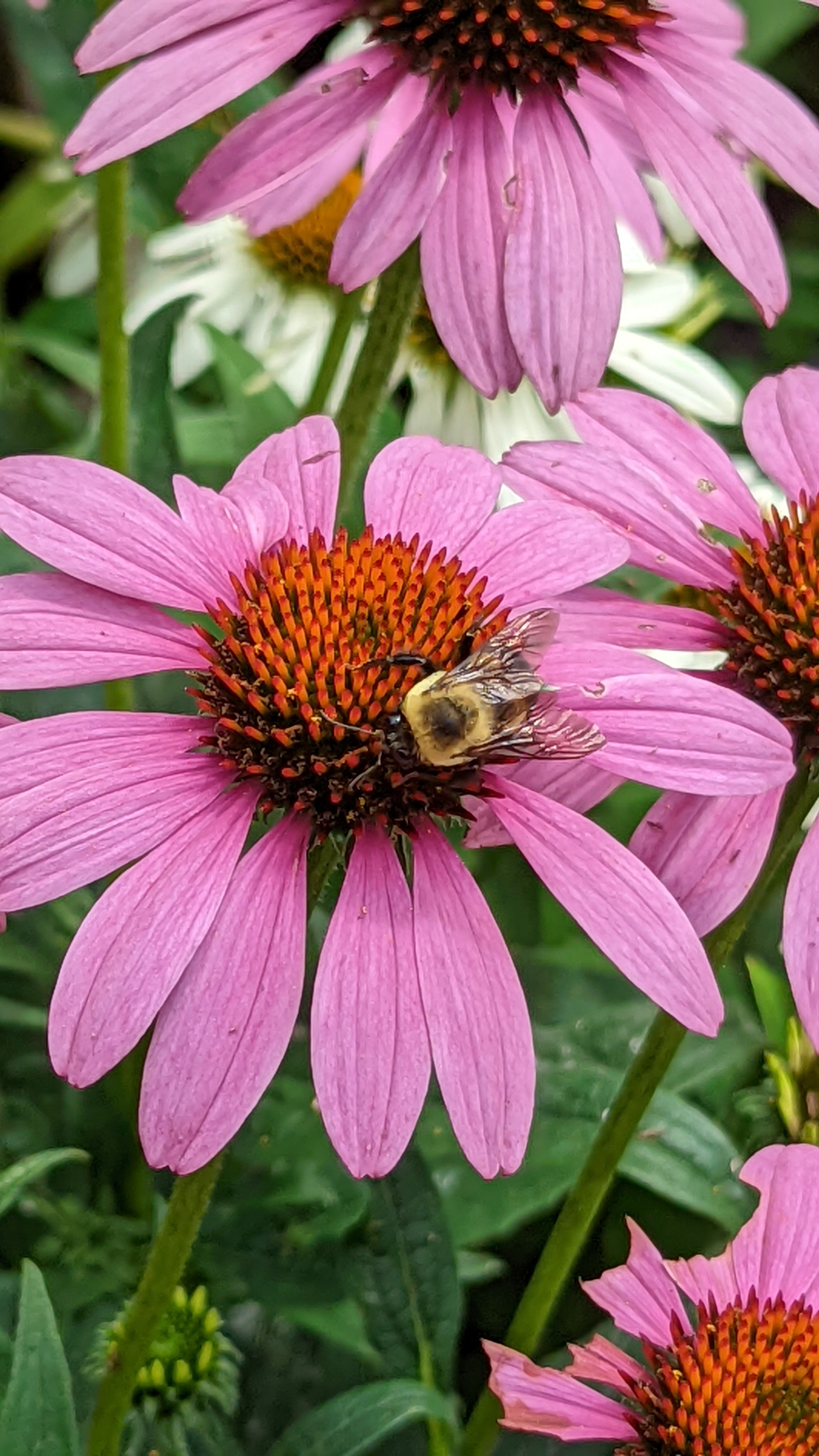Gardens & Bees: A Beneficial Insect
Written by Master Gardener Volunteer: Amanda Koran
“The first insect I'll talk about is the bumble bee. It is pictured here on a purple coneflower, flying into a bloom on a hosta and on flower on our button bush. There are several species of bumble bee that are native to North America. They are often some of the first bees we see in the spring. Most likely, the bumble bee you see when you are first outside in the spring, is the queen. Queen bumble bees are the only bumble bees that overwinter. The overwintered queen starts a new colony each spring. This queen and the worker bees she produces live until the first frost. All the worker bees are female. Close to the end of the growing season, the queen will lay eggs that will become male bees and will feed some of the young female bees more than a standard worker bee, causing them to become young queen bees. These new queens will be the ones that overwinter to start a new colony next year.
Bumble bees forage on a wide variety of flowers, shrubs and trees. They are also important pollinator for agricultural crops. Bumble bees visit everything from apples, pears and cherries to tomatoes, peppers, and squash. Bumble bees are able to use a technique called buzz pollination which honey bees don't use. Many of our favorite food crops, such as tomatoes, peppers and blueberries, require buzz pollination in order to produce fruit. This along with their long tongues and ability to forage in cooler weather, makes them a valuable part of growing our food crop.”
We are lucky to have received some beautiful photos of her findings.
Reference source: Bees: An Identification and Native Plant Forage Guide by Heather Holm



